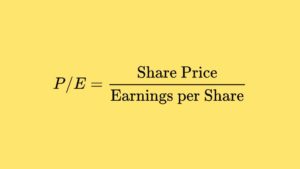Nifty gained 24% while BSE Sensex gave a return of 22% in 2021. However, the overall Market cap of all stocks listed on BSE increased by 41% in CY2021 to Rs.266 lakh crore from Rs.189 lakh crore in CY2020. Adjusting for newly listed IPOs, the rise in overall market cap is around 35% in 2021. The extent of rise in the overall market cap is much more than the rise in the broad benchmark indices Sensex / Nifty as the small cap indices rose substantially more than the increases in Sensex and Nifty. For a second year in a row, the small cap indices have beaten the Sensex / Nifty in 2021. Interestingly, when we look back the history for the last 18 years, rarely Small cap index of BSE outperformed the Sensex beyond two years.
This leads us to two set of questions –
- Will the Sensex / NIFTY rise for a 3rd year in row?
- Will Small cap index beat the Sensex for a 3rd year in row or will severely underperform the Sensex in line with the historical evidences?
Covid spread, economic conditions (growth, oil price & inflation), reversal of easing of global monetary policies are the key parameters, which would decide the domestic equity market’s direction in 2022 in addition to the inflow of capital from FPIs.
Foreign portfolio investors (FPIs) have invested just $3.9 billion in 2021 in the domestic equities despite selling $6.8 billion worth of equities in the secondary markets as they have poured in a record $10.7 in the country’s primary market in 2021. However, we could see a significant inflow of resources from the FIIs in 2022 as pandemic has left huge liquidity in the system over the last two years. Already we have seen robust inflows of FDIs and inflows through PE / VC funds in 2021. The year 2022 could see significant inflows into the secondary markets from the FIIs.
The world has to live with the Covid. There is no need to worry deeply about the Covid unless it leads to a very high rate of illness and deaths. Neither people have patience nor, many State governments have the choice to opt for severe lockdowns. As of now, Omicron, though spreads very fast, doesn’t seem to be causing serious illness or deaths.
There is no major concern on the domestic economy – after full recovery in FY2022, the domestic economy is expected to post fastest growth of around 9% in FY2023. Indicators in terms of exports, Business Resumption Index, banking credit (growth picked up to over 7.4% from near 5% during the pandemic period), tax collections, fiscal balance (actual fiscal deficit estimated to be less than Budget estimate), power consumption, FDI inflows, remittances, agricultural output, Core Sectors (growth during cumulative period April-November 2021 +13.7% as against minus 11.1% in the corresponding period of previous year), etc. provide a lot of comfort on the domestic economic front.
Reversal of monetary policies worldwide would be tapered in a phased manner and ultimately the global economy would emerge stronger when the stimulus measures are totally withdrawn. Money supply already created would start flowing into the emerging economies like India in slow but steady manner over the next 1 to 3 years.
Five State elections would not be a major concern as the General Election is still a long way to go. Perceptions and public mood/ opinions keep changing over a period of 1 or 2 years. Moreover, the global investors have always liked Indian Democracy and they brought in significant capital into Indian markets even when the ruling party fell short of absolute majority.
Tactically, there is a scope for appreciation in several stocks (like FMCG, Banks especially after recent correction, etc.) within benchmark indices.
Therefore, the overall market represented by the Sensex / NIFTY could give a modest gain of around 12% return in 2022. Market rewarded hugely since March 2020 for the full recovery in GDP in FY2022 (what was lost in absolute term in FY2021 is expected to recover fully in FY2022). That’s, absolute GDP of FY2022 would be almost equal to GDP of FY2020. However, FY2023 will be the year of real gain in absolute GDP after two years. In such a scenario, the equity market may not rise substantially (as it normally discounts good news much before the development actually materializes) but it is most unlikely to fall significantly.
However, the small cap stocks could outperform the broad indices like Sensex / Nifty by big margins once again in 2022. Historically, small caps do not outperform continuously for more than two years. However, the year 2022 may break this record. Year 2021 saw 56% year-on-year jump in the overall investor base of Bombay Stock exchange. There was a massive inflow of over 30 lakh new investors in the month of December 2021 alone. Overall investors’ base is likely to touch the 10-crore mark by the end of FY2022. These new investors are likely to continue to chase the small caps. The current market cap of all listed Small-cap stands at approximately Rs.35 lakh crore. If the 10 crore investors bring in just Rs.35,000 per annum to the small cap segment, then the incremental fund flow would be about 10% of current total market cap of small caps. That’s enough to fire up this space. Apart from this tactical opportunity, still there are many quality small cap stocks, which failed to participate in this mega rally.
However, a word of caution – hundreds of penny stocks and small cap stocks without any fundamental basis are also participating in the current rally. If you are lucky to make profits from them, then book profits quickly. If at all you are not able to control the temptation in investing in such stocks. And then remember the fact – smart people never carry their wealth to Casinos, but only a fraction of their incomes. Treat in same fashion the investments in penny and small cap stocks, which completely lack fundamental convictions.
Oil price (rising close to $100 a barrel) and any possibility of massive illness / death rates among the people infected with any variant of Covid alone would remain as the major risk factors for the equity markets. Otherwise, overall the Indian equity market set for a stable return while many small cap stocks are expected to create wealth in the next 1 to 3 years.
























